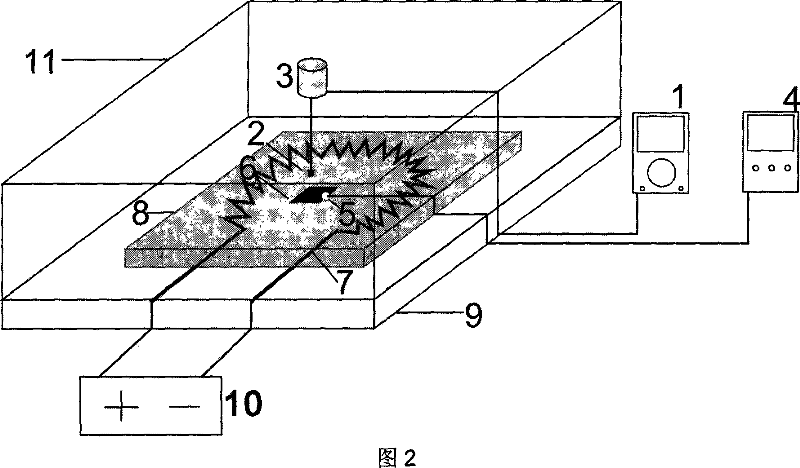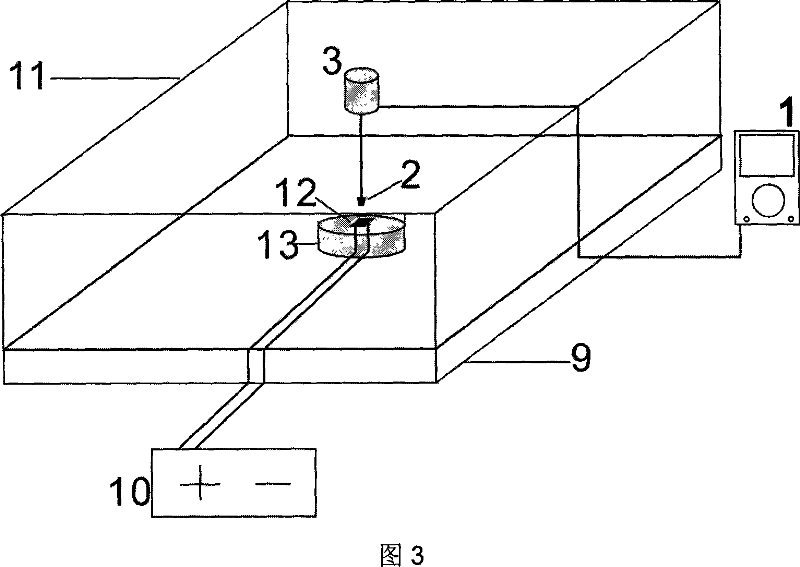Method for measuring surface temperature of micro-hotplate
A surface temperature and strength measurement technology, applied in the field of temperature measurement, can solve the problems of inaccurate measurement, small surface area of the micro-hot plate, changing temperature distribution, etc.
- Summary
- Abstract
- Description
- Claims
- Application Information
AI Technical Summary
Problems solved by technology
Method used
Image
Examples
Embodiment 1
[0029] On the oriented Si substrate 101, SiO with a thickness of 3000 Ȧ was grown by PECVD at 300°C. 2 As the insulating layer 102, and utilizing the magnetron sputtering apparatus to sputter the metal Ti with a thickness of 450 Ȧ as the adhesive layer 103 and the metal Pt with a thickness of 1800 Ȧ as the signal electrode and the heating electrode layer 104 (atmospheric pressure 0.95Pa, temperature 300 ℃, RF power 60W). Then use the photolithography process to cure the photoresist of the electrode pattern shown in Figure 4 on the Si wafer. The area of the micro-hot plate we designed is 5×1.5mm 2 , the width of the heating electrode and the signal electrode is 50 μm, and the distance between the electrodes is 25 μm. Place the coated Si sheet on the position of the target of the magnetron sputtering instrument, and use the impact of Ar ions to remove the parts other than the photoresist on the Si sheet. Pt and Ti are etched away (atmospheric pressure 0.95Pa, temperature 100°C...
PUM
 Login to View More
Login to View More Abstract
Description
Claims
Application Information
 Login to View More
Login to View More - R&D
- Intellectual Property
- Life Sciences
- Materials
- Tech Scout
- Unparalleled Data Quality
- Higher Quality Content
- 60% Fewer Hallucinations
Browse by: Latest US Patents, China's latest patents, Technical Efficacy Thesaurus, Application Domain, Technology Topic, Popular Technical Reports.
© 2025 PatSnap. All rights reserved.Legal|Privacy policy|Modern Slavery Act Transparency Statement|Sitemap|About US| Contact US: help@patsnap.com



